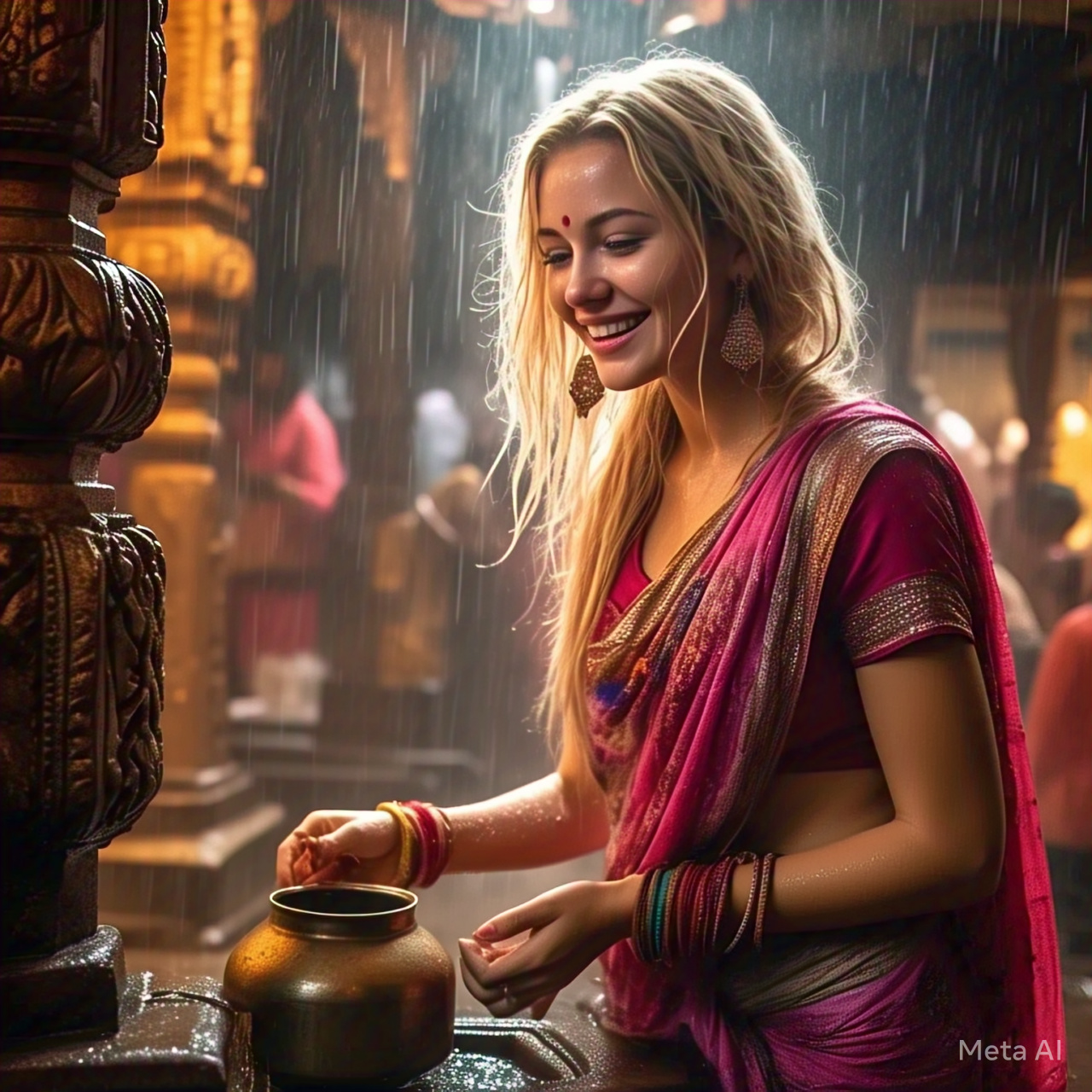The True Essence of Peace
Once upon a time, a king announced a contest, offering a prize to the artist who could paint the best depiction of peace. Many artists participated, and after careful consideration, the king narrowed his choices to two paintings.
The first painting
portrayed a serene lake, its still waters reflecting majestic mountains that
towered around it. Above, a soft blue sky stretched across the horizon, dotted
with fluffy white clouds. Everyone who saw it believed it was the perfect representation
of peace.
The second painting also featured mountains, but these were rugged and harsh. Above them, a storm raged, with lightning streaking across a dark sky as rain poured down. A powerful waterfall cascaded down the mountain’s side, creating a loud and chaotic scene. At first glance, this painting did not seem peaceful at all.
However, upon closer
examination, the king noticed a small bush growing in a crevice behind the
waterfall. Within its branches, a mother bird had built her nest, calmly
sitting amidst the roaring water. Despite the surrounding turmoil, the bird
remained undisturbed—completely at peace.
The king chose this second painting as the winner.
"Do you know
why?" the king explained. "True peace is not found in a place without
noise, trouble, or hardship. It is found in the ability to remain calm and
steadfast in the midst of life's storms. That is the real essence of
peace."
Mahashivratri: A Celebration Beyond Religion
A prominent journalist
once asked me, “Sadhguru, if I am a Muslim or a Christian, can I celebrate
Mahashivratri?” I responded, “Muslims cannot participate. Christians cannot
engage. Hindus definitely cannot join. Only human beings can, because
Mahashivratri is a celebration of human nature.”
Mahashivratri is not about any particular religion, culture, or creed. It is a night dedicated to exploring the limitless potential within us—the ability to transcend our limitations. Among the thirteen Shivaratris in the lunar calendar, this is the most significant, as planetary alignments on this night create a natural surge of energy within the human system.
The yogic sciences
recognize this phenomenon and offer tools to harness it. Staying awake on
Mahashivratri is not just about keeping our eyes open; it is about awakening
the deepest dimensions of our being. Most people move through life in a state
of unconsciousness, their eyes open but their awareness asleep. This sacred
night offers an opportunity to break free from that slumber. The practice of
sitting upright through the night is not a ritual but a way to allow energy to
flow freely through the spine, leading to heightened awareness.
Shiva, the Adiyogi, represents this boundless potential. He is not a deity in the conventional sense but a symbol of both stillness and dynamism. He sits in absolute stillness, yet the cosmos dances around him. His presence reminds us that we, too, can find inner stillness while allowing life to unfold around us without being entangled in it. Today, this message is more relevant than ever.
Look at the
world—conflicts, divisions, and turmoil. The problem is not a lack of resources
or intelligence; it is the absence of conscious human beings. The human mind,
when turned against itself, becomes the greatest source of misery. People
create their own heaven or hell within their minds. This powerful instrument,
which can be a source of boundless joy, has instead become a machine of
suffering.
To help individuals harness the potential of their minds, we introduced the ‘Miracle of Mind’ app—a free tool offering just seven minutes of daily meditation. Imagine the transformation if even half the world’s population sat still and turned inward for a few moments each day. Meditation is like brushing your teeth—not something you do because you enjoy it, but because you understand its impact on your well-being. It is hygiene for the mind. A harmonious mind creates joy, clarity, and balance, while a chaotic mind breeds stress, anxiety, and turmoil. We see the consequences of this imbalance on a global scale. While plastic in the oceans is an issue, "plastic in the brain"—toxic thoughts, compulsive reactions, and a lack of conscious response—is an even greater crisis.
When people learn to master their minds, they naturally become more compassionate, inclusive, and capable of experiencing life in its full depth. A mind that is free from entanglement becomes a gateway to the infinite. Mahashivratri is not about rituals or religious identities; it is about discovering the inner freedom that allows us to live with grace. When a human being becomes truly still—not just physically, but at the very core of their existence—they become a conduit for something far greater than themselves.
IF HE EXIST
I drive joy there was a doctor in Benaras who
spent 7 minutes in the morning and evening for mediation on God. Knowing this,
his colleagues and friends laughed at him. One day they argued that he was
wasting 7 precious minutes on something, which he had been misled into
believing. The doctor replied, “Well, if God does not exist, I agree that I am
wasting 7 minutes a day. But, if He exists? I am afraid you are wasting your
entire lifetime. I prefer to waste 7 minutes rather than a lifetime. Why should
you grudge me the 7minutes joy that I derive 4m.-
ILLUSTRATED REVIEW : 7thheaven moment of the week
IN WPL delhi no 7 top score against
gujart














No comments:
Post a Comment